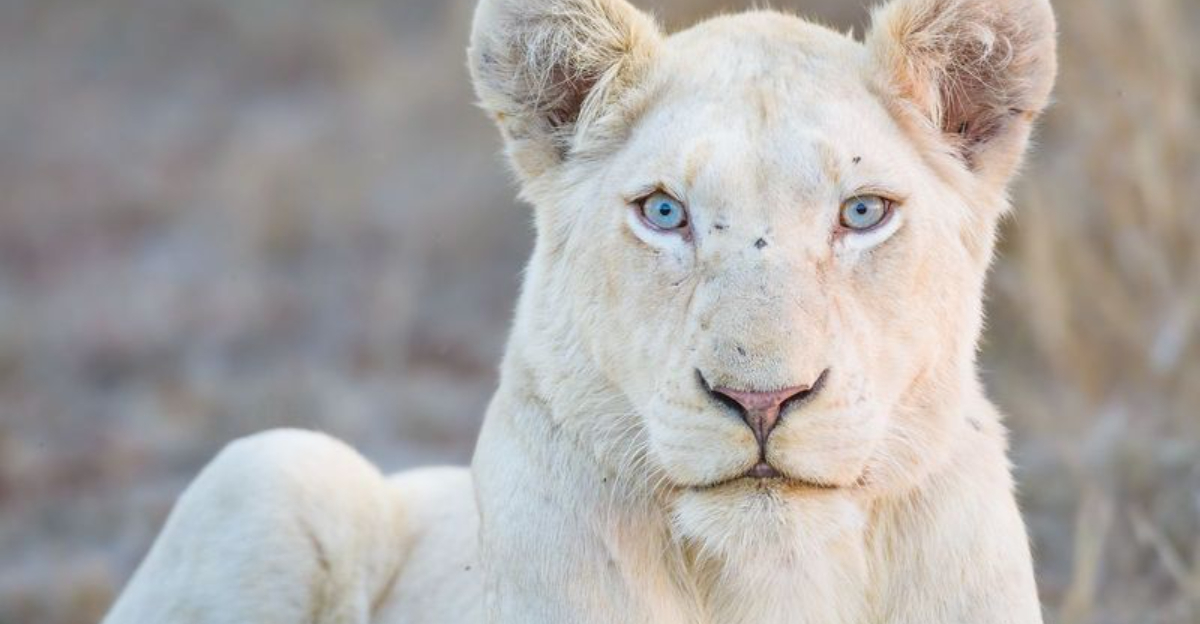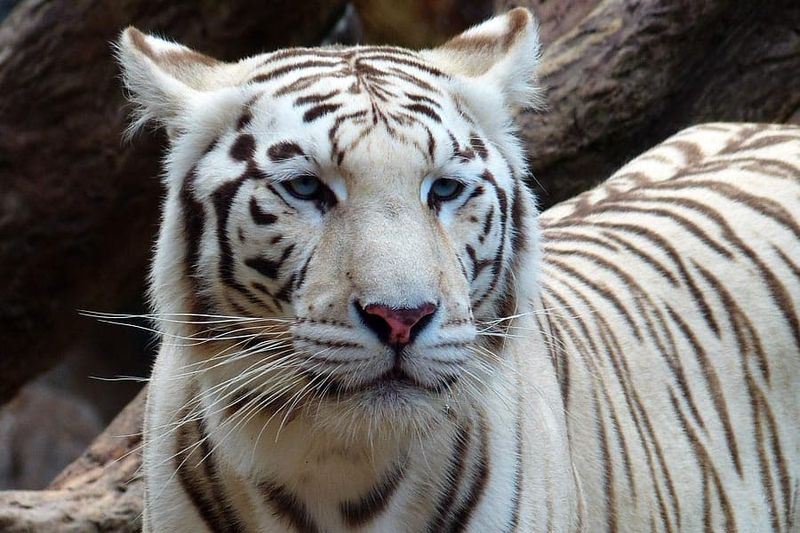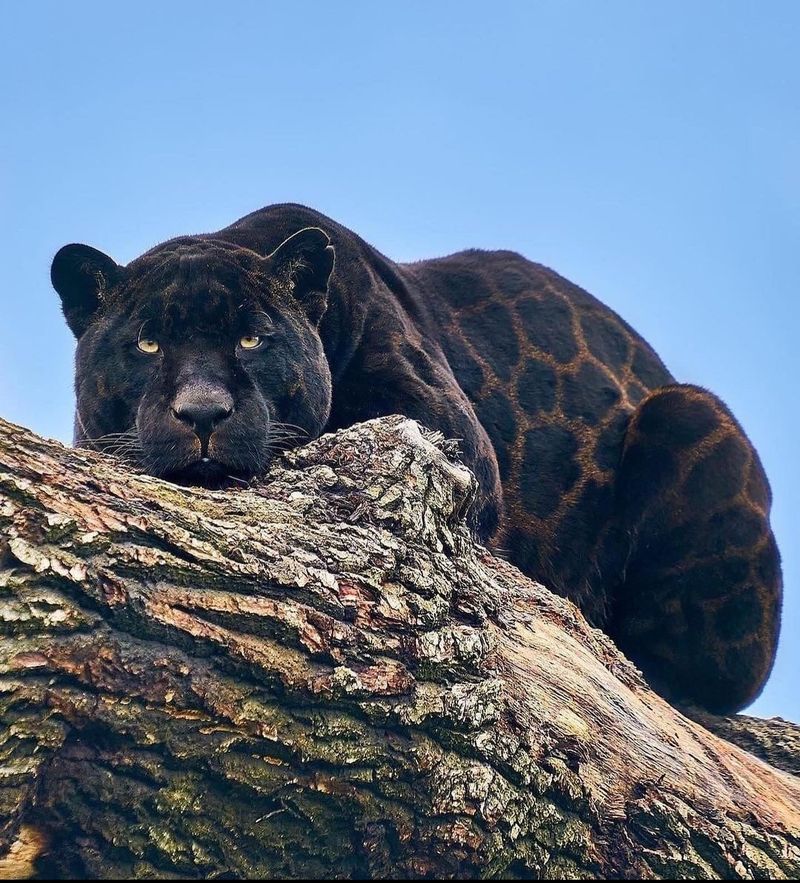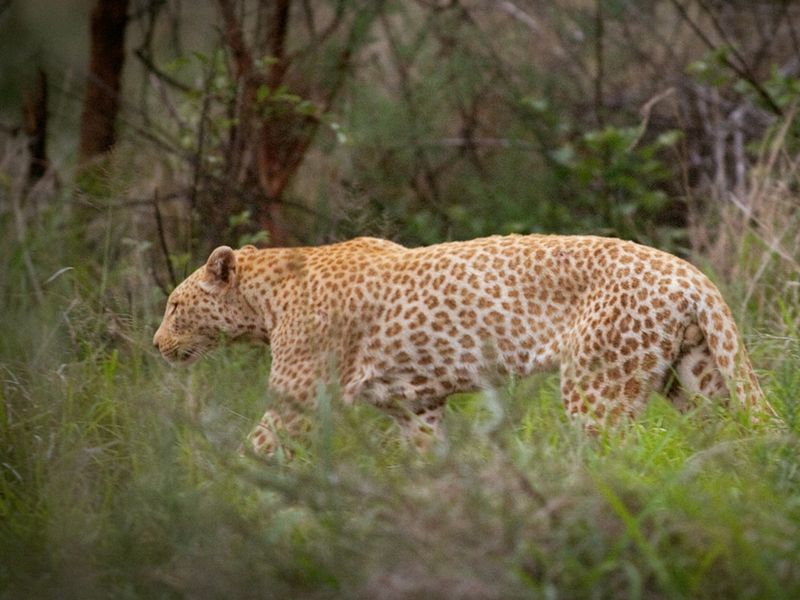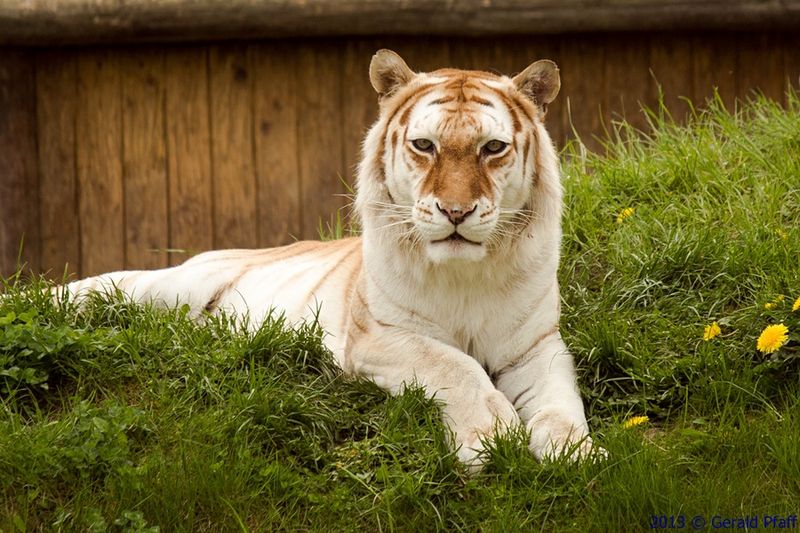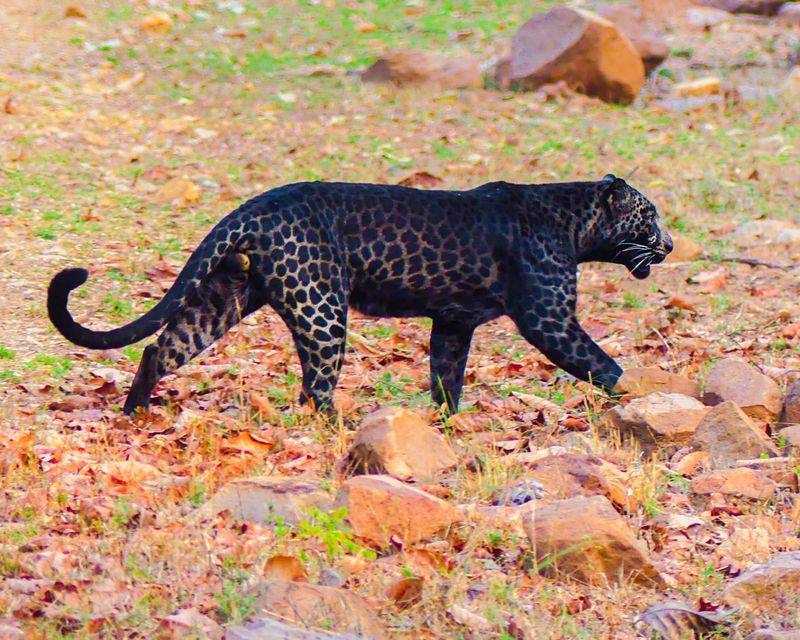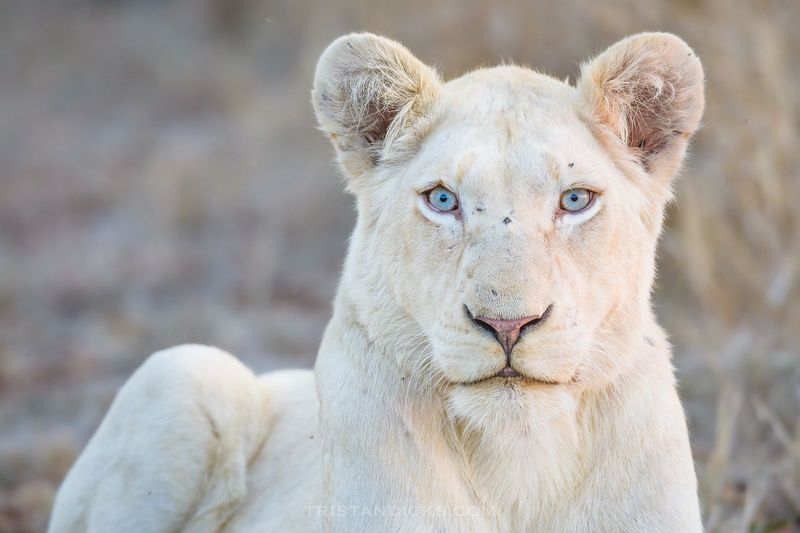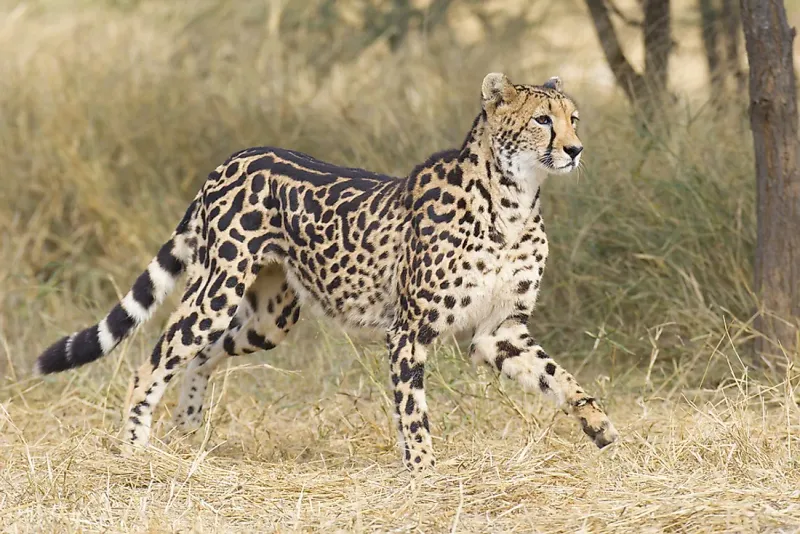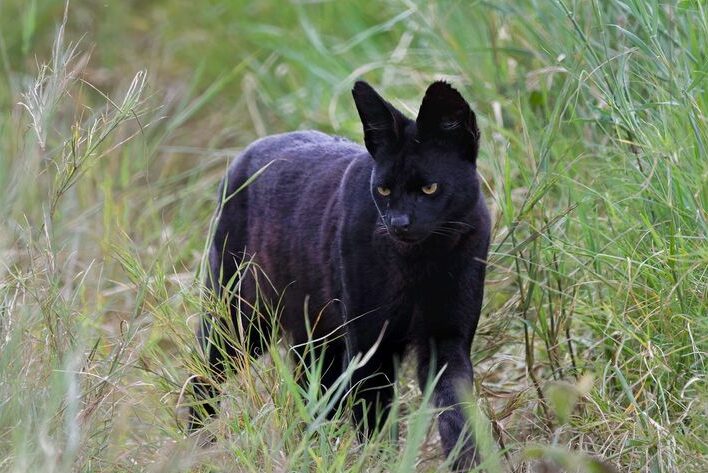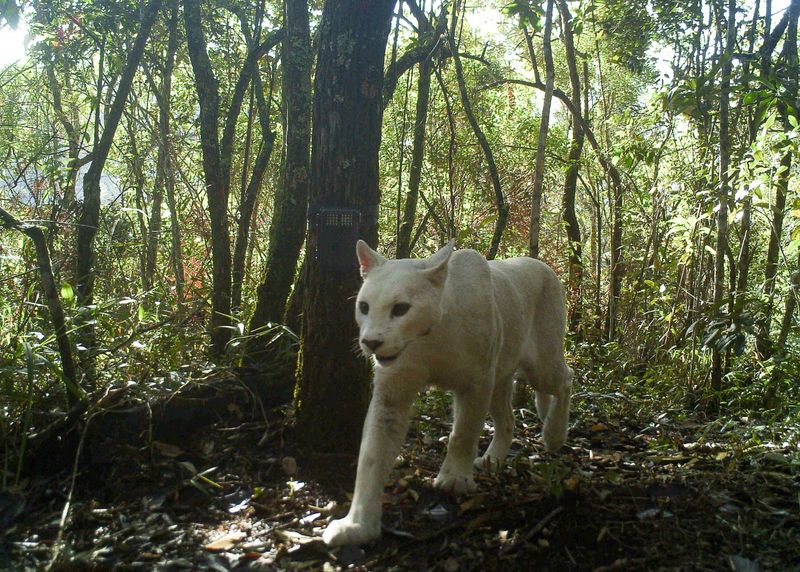📖 Table of Content:
When we think of wild cats, certain images instantly come to mind—striped tigers stalking through dense jungles, golden lions basking on the savanna, and spotted leopards draped over tree branches. But every so often, nature surprises us with a twist. Through rare genetic mutations and uncommon color variations, some big cats break the mold, displaying coats so striking they seem almost mythical. These unexpected patterns and pigments don’t just turn heads—they reveal fascinating insights into the wild world of feline genetics.
From the shadowy allure of melanistic panthers to the ethereal elegance of white tigers, these color changes are more than just beautiful—they’re scientific anomalies. Some mutations, like leucism or melanism, occur naturally and occasionally show up in the wild, while others are more likely the result of selective breeding or genetic recessives that rarely meet in the gene pool. Regardless of origin, these variations add a layer of wonder to already majestic creatures, reminding us that evolution has a few surprises up its sleeve.
Here are 12 remarkable instances where nature got truly creative with wild cat coloring. Each example showcases not only a unique visual spectacle but also a glimpse into the complex genetic code that shapes our planet’s most powerful predators. Prepare to meet some of the rarest and most mesmerizing cats the animal kingdom has ever produced.
1. White Bengal Tiger
Shimmering like a ghost in the jungle, the white Bengal tiger is a stunning product of a rare genetic mutation. It’s not an albino—rather, it carries a recessive gene that suppresses orange pigmentation while preserving its signature black stripes. Unlike their golden counterparts, white tigers often have icy blue eyes and a slightly larger body frame. These cats are typically found in captivity, as the odds of two carriers mating in the wild are exceedingly low. Zoos and breeders have often favored them for their beauty, but this has led to ethical concerns over inbreeding. Their visual uniqueness has turned them into cultural icons, appearing in artwork, film, and mythology. However, their rarity comes at a cost, often linked to reduced genetic diversity and health complications.
2. Melanistic Jaguar (Black Panther)
Dark as midnight, the melanistic jaguar is nature’s shadowy masterpiece. Contrary to popular belief, the classic rosette pattern is still present beneath the inky coat, subtly revealed in certain lighting. This color mutation stems from an excess of melanin, a pigment that causes the fur to turn nearly black. In the dense rainforests of South America, this adaptation may actually provide an evolutionary advantage by enhancing stealth during nocturnal hunts. They aren’t a separate species but a genetic variation within the jaguar population. While extremely rare in the wild, they’ve captivated popular culture and inspired everything from superhero identities to mystical folklore. Their striking appearance makes them one of the most iconic examples of big cat color mutations.
3. Strawberry Leopard (Erythristic Leopard)
With a rose gold coat, the strawberry leopard is among the rarest feline color morphs ever recorded. This unique coloring—called erythristic—results from a genetic anomaly that reduces black pigmentation while enhancing red and pink tones. Sightings have been few and far between, mostly documented in South Africa. Instead of bold black rosettes, these leopards feature soft, russet markings that blend seamlessly with their warm-toned fur. Nature didn’t design this color for camouflage, making it even more unusual in the wild. Their beauty feels almost artificial, as if hand-painted by an artist. Though scientifically intriguing, their rarity makes conservation and observation incredibly difficult.
4. Golden Tabby Tiger
Glowing with a honeyed hue, the golden tabby tiger is a visual departure from the typical orange-striped Bengal. This unusual coloration is caused by the combination of two recessive genes, one of which also produces white tigers. With faded, cinnamon-colored stripes and a thick, plush coat, it looks like a living fairytale. Primarily found in captivity due to selective breeding, the golden tabby is an exceptionally rare variation. Unlike white tigers, they aren’t well-known globally, which only adds to their mystique. Their gentle appearance has led some to refer to them as “strawberry tigers.” Yet despite their softness in color, they are no less formidable than their vividly colored cousins.
5. Melanistic Leopard (Black Panther)
Cloaked in obsidian elegance, the melanistic leopard mirrors its jaguar cousin with a coat that swallows light. These leopards, often spotted in Southeast Asia and parts of Africa, owe their unique appearance to a genetic mutation that amplifies melanin production. Rather than eliminating their trademark spots, this mutation simply obscures them—like a secret code hidden in plain sight. They move silently through their environment, using their dark coats to melt into moonlit shadows. Although commonly mistaken for a different species, they are genetically no different from standard leopards. Their presence in both folklore and modern media has made the term “black panther” synonymous with power and mystery. Scientists believe this color adaptation may benefit survival in forested habitats where low light prevails.
6. White Lion
Pale and majestic, white lions possess a creamy ivory coat due to a rare condition called leucism. Distinct from albinism, leucism allows some pigmentation—most notably in the eyes and skin—while muting fur color to a beautiful off-white. Native to the Timbavati region of South Africa, these lions once teetered on the edge of myth. Rediscovered and reintroduced through conservation programs, they’ve become a symbol of rarity and power. Their pale appearance offers no survival advantage in the wild, making them more vulnerable to detection by prey. Despite this, they thrive in protected reserves and breeding programs. Spiritual significance has also been ascribed to them by local tribes, who regard them as divine messengers.
7. King Cheetah
At first glance, the king cheetah appears like a different species entirely, with thick, dark stripes replacing the usual spots. This dramatic coat pattern results from a recessive gene mutation that affects the fur’s marking layout. Found mostly in Zimbabwe and South Africa, the king cheetah’s bold appearance doesn’t hinder its speed or agility. The mutation is not linked to any known health issues, which is unusual for such rare traits. Genetic research has identified the Taqpep gene as the culprit behind this regal transformation. Few exist in the wild, but captive breeding has helped preserve the line. Their fierce yet elegant design gives them a mythic, almost prehistoric air.
8. Black-Footed Melanistic Serval
Though not traditionally classified as a big cat, the serval earns its place on the list with its rare melanistic variant. Sleek and completely black, these servals have been documented mainly in Kenya’s highlands. The overabundance of melanin gives them a velvet-like appearance, erasing their usual gold-and-black spotted coat. These rare individuals are more active at night, likely benefiting from their camouflaging hue. Unlike leopards or jaguars, the black serval retains its long limbs and large ears, giving it a hauntingly elegant silhouette. Despite its striking appearance, the melanistic serval remains largely unknown outside scientific circles. Spotting one in the wild is a once-in-a-lifetime experience for wildlife enthusiasts.
9. White Cougar (Leucistic Puma)
Photographs taken in 2013 and resurfaced years later revealed a ghostly young male cougar striding through Brazil’s Serra dos Órgãos National Park. This striking feline was the first confirmed wild case of leucism in a cougar, a condition that drains pigmentation from the coat while leaving the eyes and skin unaffected. Unlike albinism, leucism allows for normal eye color and doesn’t impact vision or health. The cougar’s pale, almost snow-white fur stood out dramatically against the lush Atlantic Forest backdrop. Wildlife biologists were stunned by the find, as no other confirmed wild leucistic cougars had been documented before. The rare sighting offers a hauntingly beautiful reminder that nature always has a few surprises hidden in plain sight.
